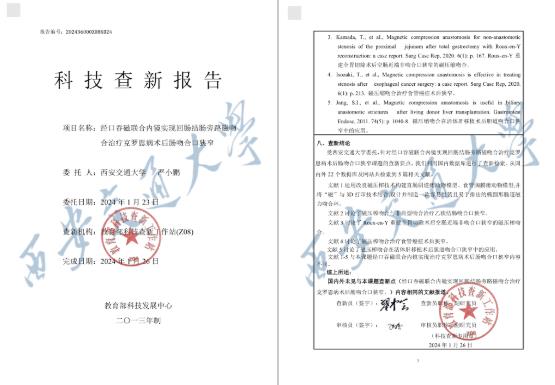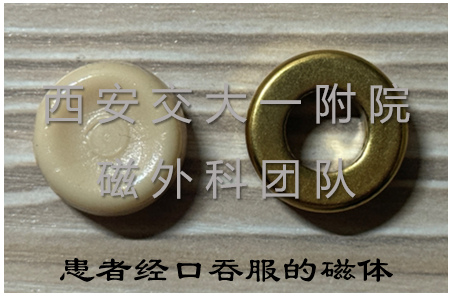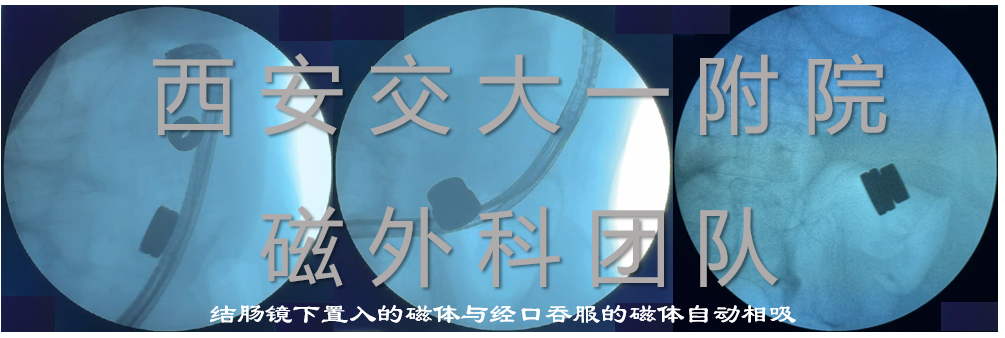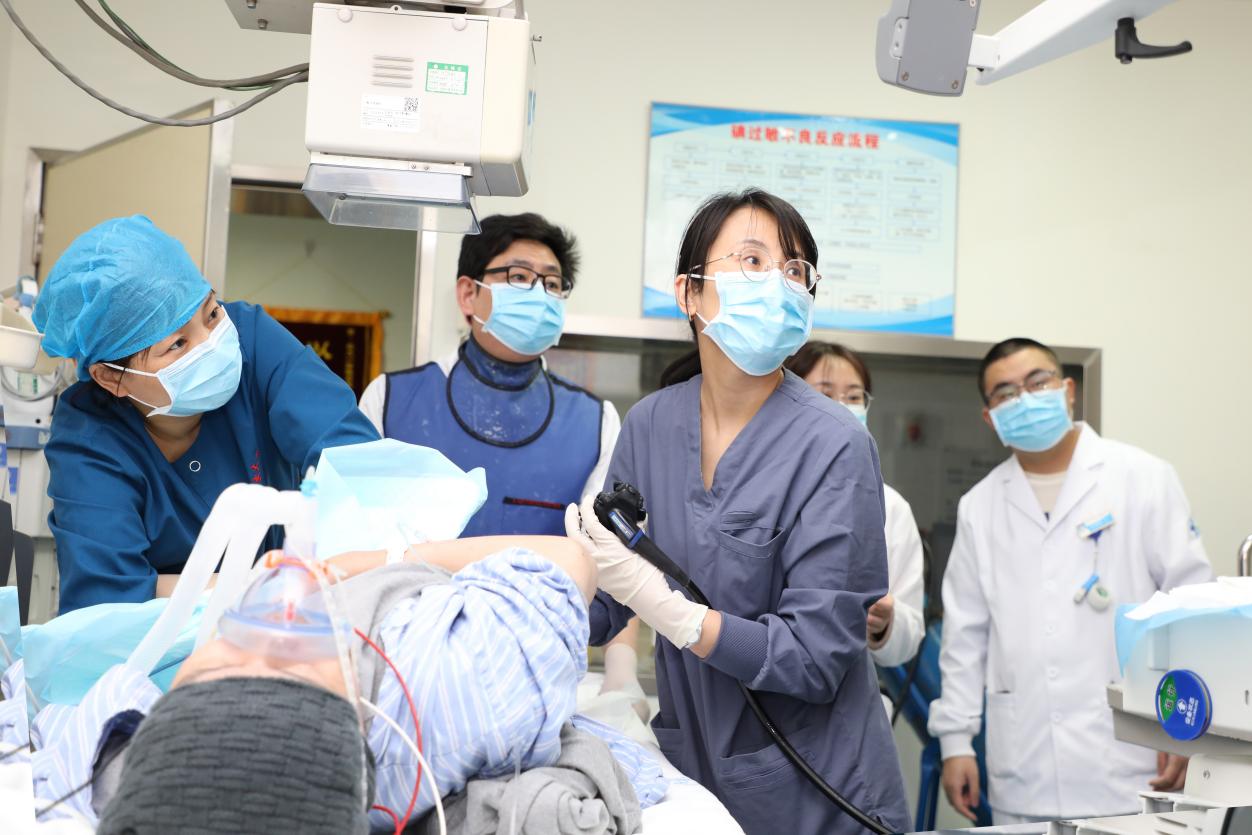Recently, Department of Hepatobiliary Surgery in the East District of the First Affiliated Hospital (FAH) of Xi’an Jiaotong University (XJTU) innovatively achieved ileocolic bypass magnetic anastomosis for a Crohn's disease patient with intestinal anastomotic stenosis after surgery by oral administration of magnets. Postoperatively, intestinal stenosis was successfully treated and normal eating was restored. After literature review, this is the first case of this kind worldwide.

On December 24, 2023, a male patient was admitted to Department of Hepatobiliary Surgery in the East District of the FAH of XJTU. The patient underwent mutiple times of intestinal resection due to Crohn's disease, resulting in severe abdominal adhesion and anastomotic stenosis of jejunum and transverse colon. He could only eat liquid food. The existing treatment methods failed to improve the quality of life. Physician Yan Xiaopeng innovatively formulated the treatment protocol of oral administration of magnets. After the daughter magnet reached the proximal end of stenotic intestine, the distal magnet was placed via colonoscope, thus completing intestinal anastomosis to form a passage and treat intestinal stenosis. After nearly 1-month treatment and observation, the proximal-to-distal end magnet anastomosis was successfully completed on January 16. On January 24, the anastomotic stoma was established, and the magnets fell off and were discharged through the anus. On January 29, the patient had no abnormality in all tests, resumed oral intake, had spontaneous defecation and was discharged smoothly.
At the News Briefing for Innovative Treament of Intestional Stenosis by Magnetic Surgical Technologies of the FAH of XJTU, Physician Yan Xiaopeng introduced that "magnetic anastomosis is to place two magnets at the distal and proximal ends of the stenotic digestive tract. Through mutual attraction of two magnets, the tissues at the stenotic site can be gradually compressed, leading to ischemia-necrosis-shedding, whereas the tissues adjacent to the compression site experience the process of adhesion-repair-healing, thus completing the reconstruction of digestive tract”. The key procedure is to place two magnetic rings on both sides of the stenosis. Generally, the magnetic rings will be placed through the anus and the stoma. However, the patient has no external stoma. After comprehensive consideration, Yan Xiaopeng proposed that the daughter magnet could reach the proximal end of the stenotic intestine by oral administration, and the distal magnet could be placed through the colonoscope, thereby completing intestinal anastomosis. The surgical plan was reported to Professor Lyu Yi’s magnetic surgery team for approval.

To avoid missing possible stenotic lesions of the small intestine, Yan Xiaopeng recorded all video data of gastrointestinal radiography and watched the video repeatedly. To simulate the real experience of oral administration of magnets, Yan Xiaopeng and his team member finally chose a magnet with a diameter of 20 mm and a height of 6 mm for oral administration after multiple oral administrations of sugar pills. After thorough consideration regarding surgical procedures, Yan Xiaopeng modified the magnet into a magnet with a larger mass on the colon side to ensure that the magnet can move in an ideal position after the stoma is established and can be more easily discharged from the body through the anus.

On January 2, 2024, X-ray showed that the patient easily swallowed a 20-mm magnet in diameter. After 2-week perioperative nursing care, the magnet was confirmed to reach the proximal end of intestinal stenosis. With joint efforts of Deputy Chief Physician Sha Huanchen and colleagues, the parent magnet was successfully placed to the distal end of intestinal stenosis through the colonoscope, and X-ray showed that the magnets at both ends of the intestine were automatically aligned and attracted.

One week later, the anastomotic stoma was established, and the magnets fell off and were discharged through the anus. Chief Physician Xue Hairong from Department of Gastroenterology performed colonoscopy for the patient, and confirmed that the magnetic anastomosis was patent. The whole treatment process was successfully completed.
